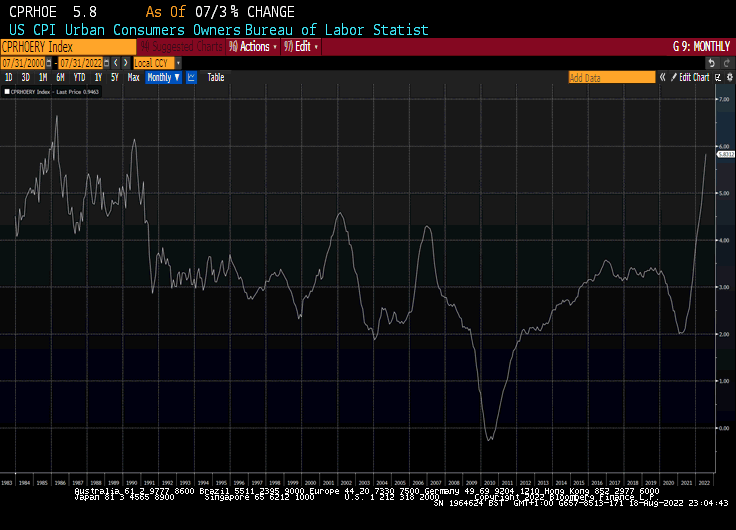Email of the day on bear market rallies or a sustainable low
Eoin, why do you believe that we are seeing no more than a continuation of a short covering rally. Surely you must concede from a pure technical perspective that the charts in the US in particular look very encouraging. The high valuation names largely stopped falling in May, and trended sideways for the better part of two months, and since then have seen a succession of higher lows and higher highs in a fairly consistent pattern.
The Nasdaq, S&P and Dow bottomed later but have very similar looking chart patterns, and all of these broke through their 50 day moving averages, and then successfully tested them before marching higher.
They have all retraced approximately 50% of their losses now. Inflation looks to have peaked, and while that does not suggest it goes straight back down again, surely does the market more good than harm.
Having sat on my hands when this last deep correction came and went, I am impatiently biding my time to get involved again, but I am starting to doubt whether the opportunity will come.
Thank you for this email which raises some important points about the strength of the rebound. I started closing out my shorts in July because I was expecting a rebound. I sold out completely on the Nasdaq’s move above 13,000 because there was significant scope for profit erosion on my initial sale price close to 15,000. Deep short-term oversold conditions result in short covering rallies. Sustainable lows need macro conditions to support bargain hunting.
Let’s consider the bullish narrative. Inflation is close to peaking and may have already peaked. That view is supported by the fact money supply peaked 18 months ago. Nevertheless, the European energy crisis is an exogenous event which is contributing to inflationary pressures.
Many investors have been waiting on the Jackson Hole conference as a potential catalyst for a Fed pivot. The logic runs that interest rate hikes will moderate from here and reverse some time in the first half of next year. The stock market has rebounded emphatically on that expectation.
 Owner’s equivalent rent may be close to a peak, but it is also at 30-year highs. Used car prices have probably also peaked but remain at elevated levels. Energy and food prices remain elevated.
Owner’s equivalent rent may be close to a peak, but it is also at 30-year highs. Used car prices have probably also peaked but remain at elevated levels. Energy and food prices remain elevated.
The Fed has two mandates. Employment and price stability. There are more people working today than before the pandemic so employment is a not a challenge. Finding enough workers is. Price stability is a long way off. Considering the continued strength in financial conditions and the stock market, the Fed has no incentive to stop raising rates. There is clear scope that instead of a Fed put, we now have a Fed call. The better the economy does the more likely they are to tighten.
The yield curve is sharply inverted, high yield spreads are still trending higher, energy prices are high and valuations are pricey. A recession is inevitable in my opinion which is why I believe this is a short covering rally. It would be an exceptionally odd set of circumstances to see stocks at all time highs during a recession.
As you are aware I reopened a short position last week and that is currently underwater.
This article quoting Albert Edwards may also be of interest. Here is a section on the likelihood of prolonged stagflation:
“I agree with Prince that we have now entered a multi-year tightening cycle,” Edwards said, before noting that in his view, “we are set for a very lengthy secular rise in rates and that despite a collapse in headline inflation in the coming recession, core inflation will likely rise through many cycles rather than be tamed.” It won’t be one tightening cycle “and done,” Albert said. “There is much more to come.”
In “Transitioning to Stagflation,” Prince wrote that “As central banks pursue their dual mandate of maximum employment and stable prices, they will not be able to achieve both at the same time and will be forced to choose between too-low growth in order to achieve their desired inflation rate, or too-high inflation in order to achieve their desired employment conditions.”
That, Prince suggested, will result in erratic policy (he didn’t use the word “erratic.”) “In managing through this, we see them toggling back and forth in their prioritization, trying to avoid both an unacceptably deep economic contraction and an unacceptably high inflation rate, culminating in a long period of too-high inflation and too-low growth,” he said.
In other words: Stagflation.
From everything I’ve seen, that’s a realistic possibility.
Back to top

